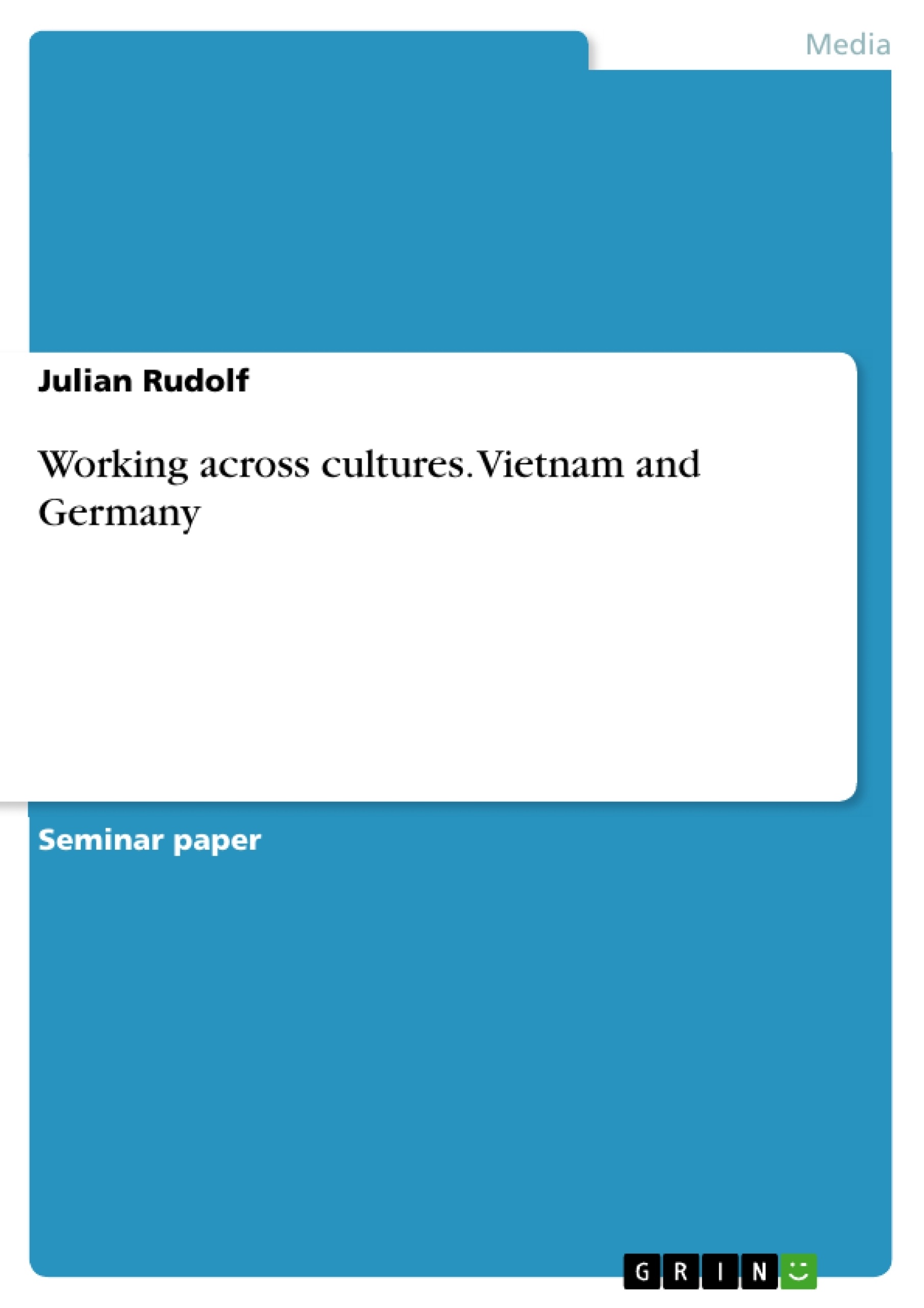It is not surprising that misunderstandings and disagreements may occur, when people from Asian cultures and western European cultures want to do business together. The behavior in business and every-day life significantly differs. If we take a closer look at all cultural dimension, especially at Hofstede’s and Hall’s models, we can identify possible reasons and solutions how to overcome the (sometimes frustrating) cultural differences in global business.
This paper will give an overview about the most important cultural dimensions, analyze the problems in German-Vietnamese business communication with the help of the cultural dimensions and think about possible strategies how to avoid or solve the cultural misunderstandings.
Table of Contents
- 1 INTRODUCTION
- 2 VIETNAMESE AND GERMAN BUSINESS CULTURES - A SHORT OVERVIEW -
- 3 THE CRITICAL INCIDENT
- 4 HOFSTEDTE
- 4.1 Power Distance
- 4.2 Uncertainty Avoidance
- 4.3 Individualism vs. collectivism
- 4.4 Long term vs. short term
- 4.5 Masculinity vs Feminity
- 5 HALL'S CULTURAL FRAMEWORKS
- 5.1 High- and low-context communication
- 5.2 Monochronic and Polychronic behavior
- 6 RICHARD R. GESTELAND'S CROSS-CULTURAL PATTERNS
- 6.1 Deal- Focus vs. Relationship- Focus
- 7 TROMPENAARS CULTURAL DIMENSIONS
- 7.1 Individualism versus communitarianism
- 7.2 Universalism vs. Particularism
- 8 CONCLUSION
Objectives and Key Themes
This term paper aims to analyze cultural differences between Vietnamese and German business cultures, specifically in the context of a start-up scenario. The paper focuses on identifying potential misunderstandings and disagreements that may arise due to cultural differences, using various cultural models to understand these disparities. It seeks to provide strategies for overcoming these differences and achieving successful collaboration in a global business context.
- Cultural dimensions and their impact on business interactions
- Analyzing cultural differences between Vietnam and Germany
- Identifying potential misunderstandings and conflicts in cross-cultural business settings
- Exploring strategies for managing and resolving cultural differences
- The importance of understanding both visible and invisible elements of culture
Chapter Summaries
The introduction presents the case study of a German and a Vietnamese student collaborating on a start-up, highlighting the challenges posed by cultural differences. Chapter 2 provides a brief overview of Vietnamese and German business cultures, emphasizing key differences in their communication styles, time perception, and relationship orientation. Chapter 3 delves into Hofstede's cultural dimensions, comparing Vietnam and Germany across various dimensions, including power distance, uncertainty avoidance, and individualism vs. collectivism. Hall's cultural frameworks, specifically high- and low-context communication and monochronic and polychronic behavior, are explored in Chapter 5. Chapter 6 examines Richard Gesteland's cross-cultural patterns, focusing on deal-oriented vs. relationship-oriented cultures.
Keywords
The key topics of this term paper are cultural dimensions, cross-cultural communication, business culture, Vietnam, Germany, Hofstede's cultural dimensions, Hall's cultural frameworks, Gesteland's cross-cultural patterns, misunderstandings, and strategies for managing cultural differences.
- Quote paper
- Julian Rudolf (Author), 2015, Working across cultures. Vietnam and Germany, Munich, GRIN Verlag, https://www.grin.com/document/373919



